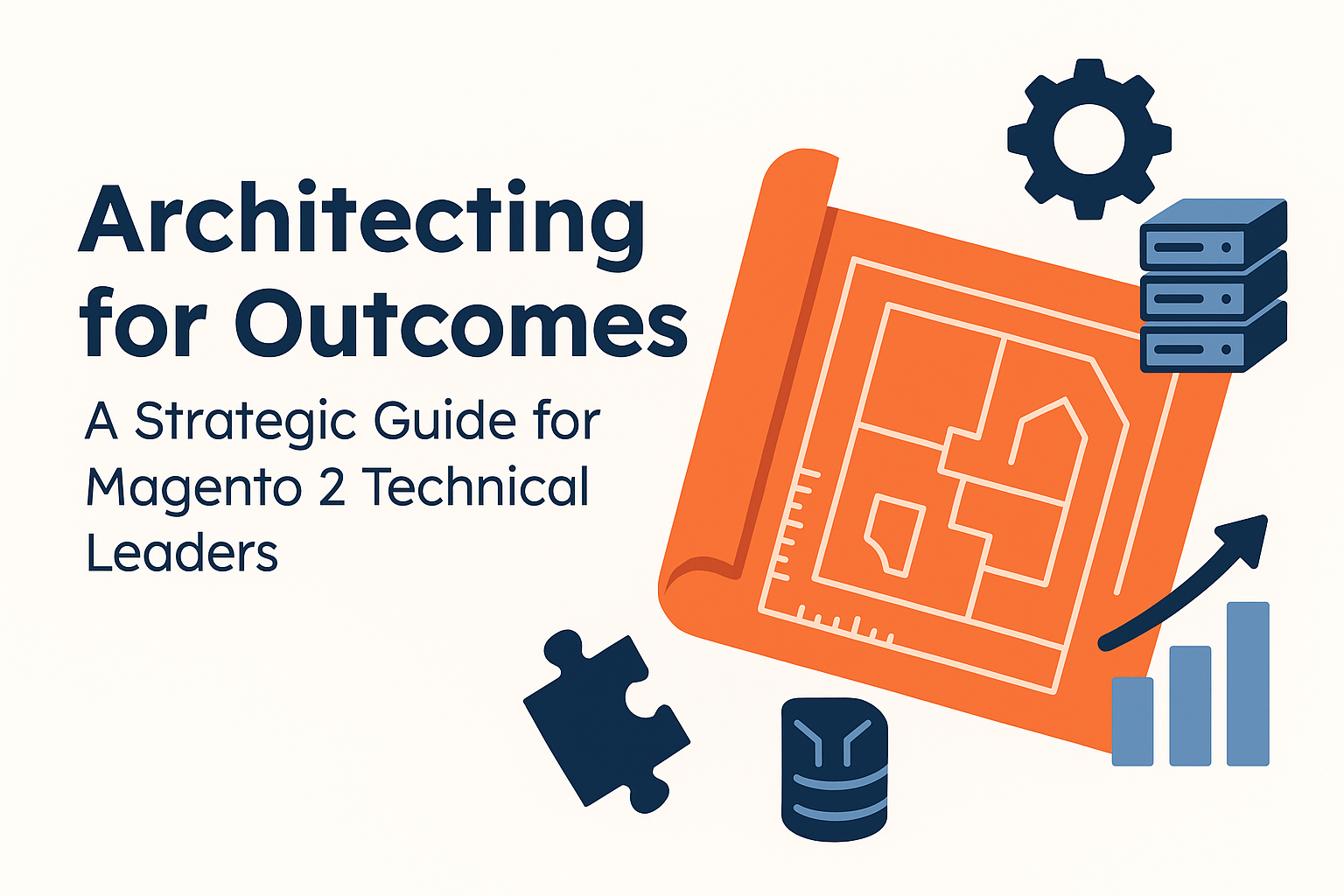How to Optimize Magento 2 Search for Higher Conversions
Explore how to optimize Magento 2 search and learn the differences between Adobe Commerce and Magento Open Source when it comes to search capabilities.
2 min read
 Tim Bucciarelli
:
May 27, 2025
Tim Bucciarelli
:
May 27, 2025

Table of Contents
This series is tailored for technical leaders managing mid-size to enterprise-level Magento development projects. Whether you're overseeing new builds, managing distributed teams, or coordinating complex system integrations, the content is designed to support your leadership role in driving outcomes through architecture.
Our audience includes:
The series is organized around four key architectural themes to surface practical insights that impact real-world business and technical outcomes.
Early structural choices in Magento 2 have a lasting effect on delivery efficiency and system stability. We explore the core decisions that shape your technical foundation:
Technical debt doesn't always announce itself early. In Magento, subtle architectural choices can create compounding risks over time. This section looks at how to detect and mitigate those risks before they become blockers.
Custom development is often necessary—but without guardrails, it can introduce future fragility. This theme explores how to make informed decisions around third-party solutions versus in-house builds.
Scaling and Future-Readiness
As your business grows or evolves toward composable architecture, your Magento instance must scale accordingly. This section highlights architecture-aligned practices that prepare you for the future.
Magento doesn't fail because of its technical limitations—it fails when implemented without clear architectural alignment to business needs and team capabilities.
By surfacing practical insights and tradeoffs, this series helps technical leaders make better decisions—not just about code, but about maintainability, scalability, and operational success. It's not just about how Magento works—it's about how to make Magento work for your team and for your business.
Stay tuned as we dig deeper into each of these themes, providing frameworks, examples, and field-tested guidance to help you lead with confidence.

Explore how to optimize Magento 2 search and learn the differences between Adobe Commerce and Magento Open Source when it comes to search capabilities.

Unlock the full potential of your Magento store with our guide to integrations. From payments to logistics, find the right integrations for your store.

Use these magento inventory management extensions to increase efficiency and fuel a more seamless customer experience.